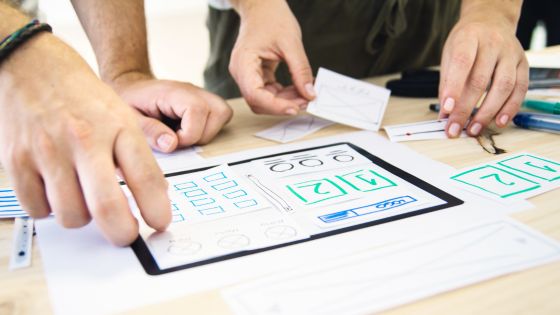User Experience (UX) and User Interface (UI) Design are two crucial components of modern software and website development. However, while the two terms are often used interchangeably, they are different areas of expertise requiring unique skill sets. This blog post will explore the differences between UX and UI Design and what services each can offer.


User Experience (UX) Design
User experience (UX) design ensures the end user has a seamless and intuitive experience when interacting with a website or application. A UX designer takes into account the user’s goals and needs and strives to create a product that is easy to use, engaging, and enjoyable. A UX designer will typically conduct user research, create user personas, develop user journeys, and design wireframes and prototypes to test and refine the user experience.
UX design services include:
- User research: Gathering user data and feedback to understand their needs, preferences, and pain points.
- Information architecture: Organizing content and features to create a clear and logical structure.
- Wireframing and prototyping: Creating low and high-fidelity representations of the product to test and refine the user experience.
- Usability testing: Conducting user testing to identify usability issues and opportunities for improvement.
- Interaction design: Designing the user interface to facilitate intuitive and efficient interactions between the user and the product.
User Interface (UI) Design
On the other hand, user interface (UI) design focuses on the product’s visual elements, such as typography, color, and layout. A UI designer works to create an aesthetically pleasing and visually cohesive product that aligns with the brand’s values and objectives. A UI designer will typically create design systems, style guides, and visual prototypes to guide the implementation of the user interface.
UI design services include:
- Visual design: Creating the visual elements of the product, such as color schemes, typography, and iconography.
- Style guide development: Documenting design guidelines to ensure visual consistency across all product elements.
- Responsive design: Designing for different screen sizes and devices to ensure a consistent user experience across platforms.
- Asset creation: Creating design assets such as icons, buttons, and illustrations.
- Animation design: Creating animations to enhance the user experience and add visual interest to the product.
The Difference between UX and UI Design
UX and UI design are two fundamental components of modern software and website development, each with its unique focus and approach. UX design involves designing the entire user experience, from research and analysis to wireframing and prototyping, to create a seamless and intuitive experience for the end user. On the other hand, UI design focuses on the visual and aesthetic elements of the product, including color schemes, typography, and layout design. Despite their differences, UX/UI design services are crucial for creating a successful product that aligns with the brand’s objectives and meets the user’s needs. By understanding the distinctions between these two vital areas of design, businesses can build digital products that engage, delight, and convert their target audience.
The Skills You Need for UX\UI Design Job
UX/UI design is an exciting and in-demand field that involves creating engaging and user-friendly digital experiences. To succeed in this field, there are several essential skills that you’ll need to develop.
Design Skills:
- Ability to create wireframes, prototypes, and visual designs
- Knowledge of typography, color theory, and visual design principles
- Familiarity with design software such as Sketch, Figma, or Adobe Creative Suite
- Understanding of responsive design and designing for various screen sizes and devices
User Research and Testing:
- Experience conducting user research and usability testing
- Familiarity with various research methods such as surveys, interviews, and A/B testing
- Ability to analyze data and extract insights to inform design decisions
Interaction Design:
- Knowledge of interaction design principles and best practices
- Ability to create intuitive and efficient user flows and interactions
- Understanding of user behavior and psychology
Collaboration:
- Ability to work in a team environment and communicate effectively with stakeholders
- Experience collaborating with developers and other designers
- Flexibility and adaptability to changing project requirements and timelines
These are just a few examples of the skills typically required for a UX/UI design job. It’s important to note that the specific skills and qualifications may vary depending on the job requirements and the industry you’re working in.
Understanding the differences between UX and UI design is essential when hiring a design agency or looking to work with designers. While there may be some overlap between the two, it’s necessary to identify which service you require based on your needs and goals. For example, whether you need a UX designer to conduct user research and develop wireframes or a UI designer to create visually stunning interfaces, both disciplines are necessary for creating a successful and engaging product.
















